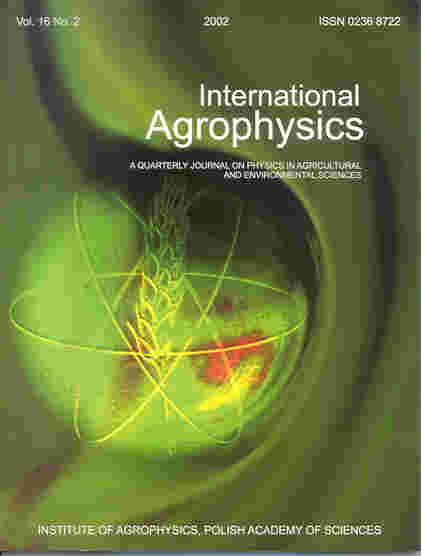|
|
|

|
|
| International Agrophysics |
| publisher: | Institute of Agrophysics
Polish Academy of Sciences
Lublin, Poland |
| ISSN: |
0236-8722 |
vol. 18, nr. 3 (2004)
|
|
|
previous paper back to paper's list next paper
|
|
|
Interaction of Pb2+ and Zn2+ salts with clay minerals**
|
|
| (get PDF ) )
|
|
|
Kharitonova G.V.1, Manucharov A.S.2, Chizhikova N.P.3, Zemlyanukhin V.N.4, Chernomorchenko N.I.2
|
|
|
1 Institute of Aquatic and Ecological Problems, Far East Division, Russian Academy of Sciences, 65 Kim-Yu-Chen Str., Khabarovsk, 680000 Russia |
|
|
2 Faculty of Soil Science, Moscow State University, Vorob’evy gory, Moscow, 119899 Russia |
|
|
3 Dokuchaev Soil Science Institute, 7 Pyzhevsky per., Moscow, 119899 Russia |
|
|
4 4Institute of Tectonics and Geophysics, Far East Division, Russian Academy of Sciences, 65 Kim-Yu-Chen Str., Khabarovsk, 680000 Russia |
|
|
vol. 18 (2004), nr. 3,
pp. 231-238
|
|
|
abstract
Multiple mica-like monocrystals, 3 mm in size, are formed when smectite is saturated with 1N Pb(CH3COO)2 solution. The appearance of neoformations meta-stable to water may be attributed to inner-sphere complex of Pb2+ cations and smectite macroanion with its charge being centered in the tetrahedral layer of beidellite structure. Textured aggregates and few neo-formation monocrystals are found in Pb(CH3COO)2-saturated kaolinite specimens. No changes of particle organization in clay minerals saturated with 1N ZnCl2 solution are registered.
|
|
keywords
Pb, Zn, clay minerals, electron microscopy, X-ray diffraction
|
|
|
|
|
|
|